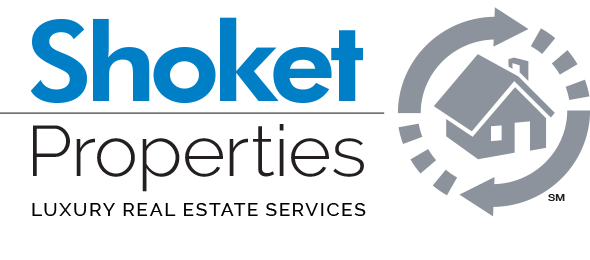Creating a Defensible Space: Ventura County and West Los Angeles County – Protecting Your Home from Wildfire Risk
By Irina Shoket and Jeff Shoket — Shoket Properties Real Estate Services
As real estate professionals representing Ventura and West Los Angeles County Counties, we know that wildfire preparedness is an essential consideration for homeowners in our region. The beauty of Southern California’s natural landscapes comes with an inherent risk of wildfires, making defensible space a crucial part of homeownership. Understanding and implementing defensible space guidelines can significantly reduce the threat of wildfire damage to your home while also improving overall property safety.
What is Defensible Space?
Defensible space refers to the strategically managed zones around your home designed to slow the spread of wildfire and provide firefighters with a safer environment to protect structures. By creating a buffer between your home and potential fuel sources, you increase your property’s resilience against wildfire and flying embers. In California, defensible space requirements are not just recommendations—they are legally mandated for homes in fire-prone areas. Defensible space is divided into three key zones, each with specific guidelines for vegetation management and fire prevention. The closer the zone is to your home, the more intensive the required maintenance. These zones work together to create a safer environment, reducing fuel for fires and minimizing the risk of embers igniting nearby structures.
Zone 0: The Ember-Resistant Zone (0-5 Feet from Your Home)
Zone 0, also known as the Immediate Zone, is the most critical area to protect your home from ember ignition. The majority of homes lost in wildfires are due to flying embers rather than direct flames, making this zone a top priority.
Key Guidelines for Zone 0:
- Remove all dead vegetation and debris, including leaves, pine needles, and mulch near the home’s foundation, deck, and roof.
- Avoid placing combustible materials such as wood piles, furniture, or planters next to your home.
- Use non-combustible materials like gravel, stone, or pavers instead of wood chips or bark mulch in landscaping.
- Keep gutters and roofs free of debris to prevent ember ignition.
Zone 1 & 2: Reducing Fire Intensity (5-100 Feet from Your Home)
These zones focus on reducing the amount of flammable vegetation surrounding your home while maintaining an attractive and functional landscape. Proper spacing and maintenance of trees and shrubs in these zones help prevent the rapid spread of wildfires.
Key Guidelines for Zones 1 & 2:
- Trim tree branches at least 6 feet from the ground to prevent fire from spreading into tree canopies.
- Increase vertical spacing between shrubs and tree branches to prevent fire from climbing. Use the “three times rule”: If a shrub is 5 feet tall, maintain 15 feet of clearance from the tree’s lowest branches.
- Maintain horizontal spacing between trees and shrubs based on slope and vegetation density:
- Flat terrain: Space trees 10 feet apart.
- Mild slopes: Space trees 20 feet apart.
- Steeper slopes: Space trees at least 30 feet apart.
- Remove dead trees, fallen branches, and excess brush regularly.
- Create breaks in vegetation with hardscaping features like stone pathways, driveways, and patios to slow fire spread.
Additional Considerations for Your Defensible Space
Beyond the designated zones, there are additional steps you can take to further protect your property from wildfires:
- Maintain well-watered, fire-resistant plants like succulents and native species that retain moisture.
- Ensure proper irrigation systems to keep vegetation healthy and less prone to ignition.
- Install ember-resistant vent covers to prevent embers from entering your attic or crawl spaces.
- Use Class A fire-rated roofing materials like metal, tile, or asphalt shingles to improve fire resistance.
Why Defensible Space Matters for Homeowners
Creating and maintaining defensible space not only protects your home from wildfire damage but also enhances property value and insurability. Many insurance companies now assess defensible space measures when determining policy coverage for homes in fire-prone regions. Additionally, a well-maintained landscape improves curb appeal and can make a significant difference when selling your home.
As real estate professionals in Ventura and West Los Angeles Counties, we understand that buyers and sellers alike are increasingly aware of the importance of fire safety. If you’re considering listing your home, taking proactive measures to create defensible space can make your property more attractive to potential buyers while ensuring compliance with California’s fire regulations.
Download your copy of this important information, you will have it in hand for reference when you need it most, or pass it onto a friend, a neighbor that maybe experiencing a similar issue. They will thank you for it…
Download The FlyerCreating a Defensible Space
Let’s Protect Your Home Together
At Shoket Properties Real Estate Services, we are committed to helping homeowners navigate the complexities of real estate in wildfire-prone areas. Whether you’re buying, selling, or looking for expert advice on how to enhance your home’s defensible space, we’re here to help.
For more information about homes in Ventura and West Los Angeles Counties, or to discuss how defensible space can impact your property, contact us today. Let’s work together to keep your home safe and your investment secure.



